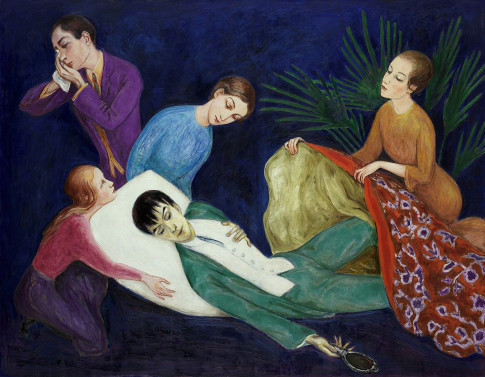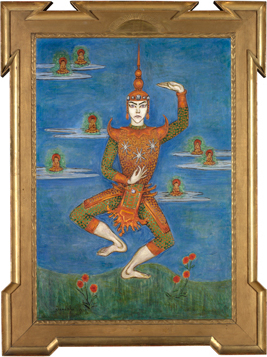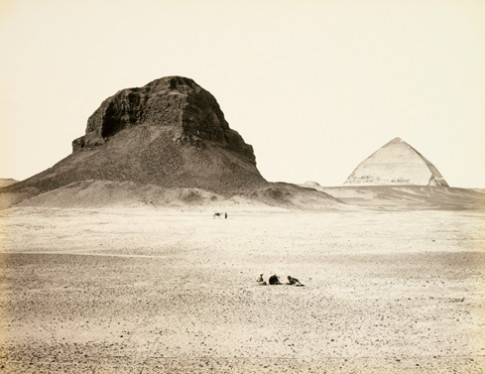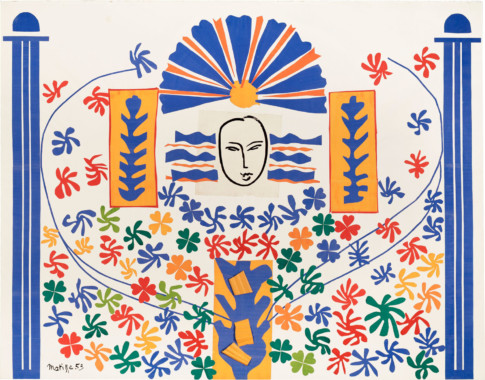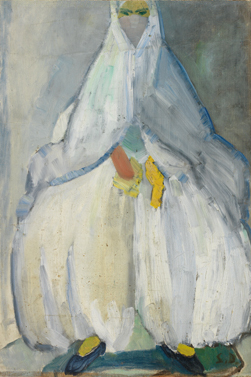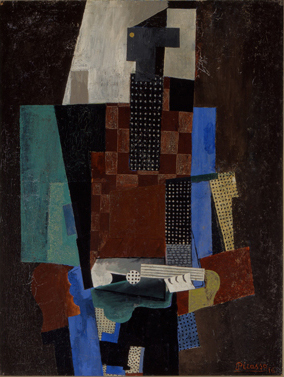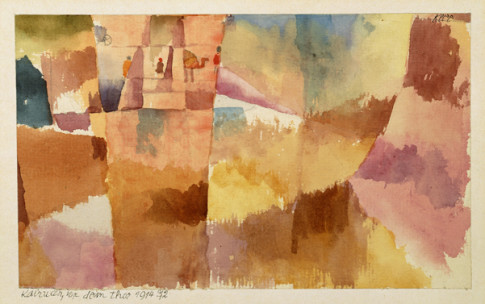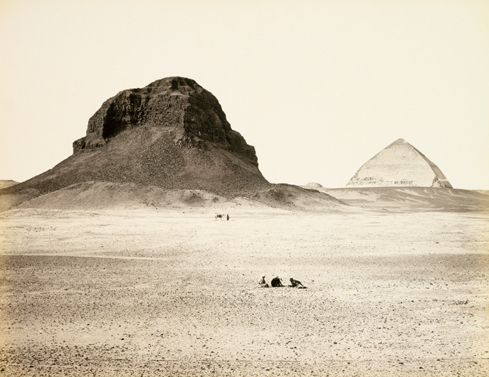
Francis Frith, The Pyramids of Dashoor, from the East, 1857 © Moderna Museet
Travelling with a camera
In photographs from the turn of the last century we can see how powerfully orientalism dominated the spirit of the day. Artists’ studios are filled with exotic objects, oriental rugs and Chinese paintings. We see people sitting on divans and drinking tea from glasses. We can sense how strong their preconceptions of the Far East were. The western world stood for the modern, rational, and enlightened, while the east was seen as its opposite—the sensual, “primal”, and erotic Orient.
Guillaume Berggren’s life is the fascinating history of an adventurous young man from Stockholm who came to lead one of Constantinople’s most popular photo studios in the 1880s and 90s. Everyone wanted to have his or her portrait taken there, especially wearing a fez or reclining like an odalisque on a divan.
Pascal Sébah and the Zangaki brothers are examples of photographers who made exotic genre pictures for a European market. Their picturesque landscapes, colorful folk costumes, and street scenes helped create and solidify the image of the Far East. During the same period, Lotten von Düben traveled north to document the traditional lives of the Laplanders. In an uncanny way the photographer seems to record the culture’s people and objects with the same scientific eye.

